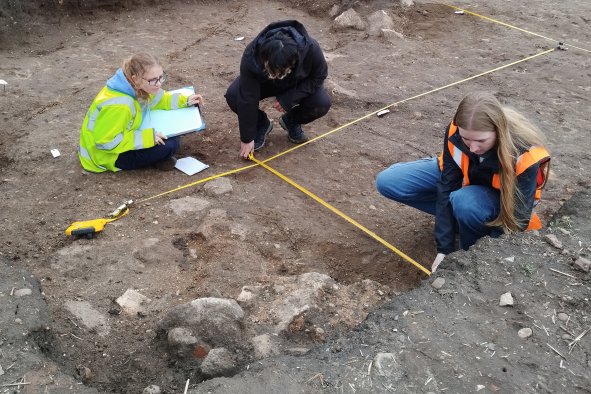Scientists have uncovered evidence of underground cave networks on the moon, which could possibly house future astronauts.
Over 200 pits have been found on the moon's surface, many of which could be the entrances to subterranean tunnels, according to a new paper in the journal Nature Astronomy. One of these pits, the Mare Tranquillitatis Pit, may lead into a tunnel over 500 feet deep below the ground.
Many of the pits on the surface of the moon are named "skylights," having been formed by the caving in of lava tubes underneath the ground.
"The first evidence of collapse pits that potentially provide access to cave conduits emerged from an analysis of data acquired by the Selenological and Engineering Explorer (SELENE) in 2009, which has subsequently been confirmed by images captured by the Lunar Reconnaissance Orbiter's camera (LROC) since 2012." the authors wrote in the paper.
"Although more than 200 pits have now been detected in various lunar geological settings and latitudes, it remains uncertain whether any of these openings could lead to extended cave conduits underground."
The Mare Tranquillitatis Pit, which was first spotted in 2009, has a radius of around 330 feet, with vertical walls and a sloping floor, with scientists long suspecting that there could be tunnels further in.
The researchers analyzed radar data of the Mare Tranquillitatis Pit collected by the Lunar Reconnaissance Orbiter. After creating simulations based on the radar images, the researchers discovered that there was likely a conduit extending from the pit's west side, possibly at a depth of 426 to 557 feet. This tunnel is thought to be between 98 and 262 feet long and 147 feet wide.
This tunnel is also thought to be accessible from the pit, meaning that it could be an ideal location for astronauts to live on the moon. Without Earth's protective magnetic field and atmosphere, astronauts are exposed to higher levels of cosmic radiation and solar particles, increasing the risk of cancer and other health issues. Living underground would help protect astronauts from this radiation.
"We find that a portion of the radar reflections originating from the MTP can be attributed to a subsurface cave conduit tens of meters long, suggesting that the MTP leads to an accessible cave conduit beneath the Moon's surface," the researchers said. "This discovery suggests that the MTP is a promising site for a lunar base, as it offers shelter from the harsh surface environment and could support long-term human exploration of the Moon."
The researchers also hope that this discovery means that this kind of underground tunnel is a common feature of the lunar pits and that there could be more lurking under the moon's surface.
"This observation could indicate that lava tubes or other types of caves are common features below maria regions. This finding is of particular significance as the future direct exploration of such structures could yield vital insights into the emplacement of lunar maria by providing access to samples of superposed lava flows with different ages. This would result in a substantial advancement in the understanding of planetary volcanism," the researchers wrote in the paper.
"A complete survey of all known lunar pits would allow us to identify the most promising accesses for subsurface lunar exploration and provide information on the potential for installing human lunar base in environments protected from cosmic radiation and with stable temperatures."
The researchers also hope that this method could be used to detect similar subterranean tunnels on Mars in the future.
Do you have a tip on a science story that Newsweek should be covering? Do you have a question about moon caves? Let us know via science@newsweek.com.
Disclaimer: The copyright of this article belongs to the original author. Reposting this article is solely for the purpose of information dissemination and does not constitute any investment advice. If there is any infringement, please contact us immediately. We will make corrections or deletions as necessary. Thank you.




